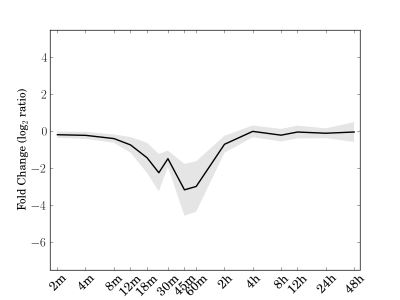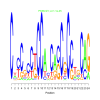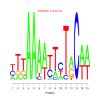Module 83 Residual: 0.18
| Title | Model version | Residual | Score |
|---|---|---|---|
| bicluster_0083 | v02 | 0.18 | -13.47 |
Displaying 1 - 20 of 20
| Cre02.g081176.t1.2 | Cre02.g086750.t1.1 DNA-directed RNA polymerases |
| Cre03.g159100.t1.2 | Cre03.g164600.t1.2 H(+)-ATPase 9 |
| Cre03.g165750.t1.1 nuclear RNA polymerase C1 | Cre03.g180000.t1.2 |
| Cre03.g192600.t1.1 Thymidine kinase | Cre03.g200850.t1.2 |
| Cre04.g220200.t3.1 K+ efflux antiporter 2 | Cre04.g230536.t1.1 |
| Cre05.g245800.t1.2 | Cre06.g278209.t2.1 CAP (Cysteine-rich secretory proteins, Antigen 5, and Pathogenesis-related 1 protein) superfamily protein |
| Cre07.g340450.t1.1 | Cre07.g347400.t1.2 D111/G-patch domain-containing protein |
| Cre09.g394550.t1.2 Phosphoribosyltransferase family protein | Cre10.g443050.t1.2 2-oxoglutarate (2OG) and Fe(II)-dependent oxygenase superfamily protein |
| Cre12.g513701.t1.2 hydrolases, acting on acid anhydrides, in phosphorus-containing anhydrides;ATP-dependent helicases;nucleic acid binding;ATP binding;RNA binding;helicases | Cre14.g629550.t1.2 THUMP domain-containing protein |
| Cre16.g661550.t1.2 Haloacid dehalogenase-like hydrolase (HAD) superfamily protein | Cre17.g727650.t1.1 ABC transporter of the mitochondrion 3 |
|
e.value: 0.000011 Motif Bicluster: Width: 24 Number of Sites: 1 Consensus: CtcCgcCtCCAcCacCgCCtgCAG |
motif_0083_2Submitted by Anonymous (not verified) on Wed, 05/20/2015 - 14:16e.value: 2900 Motif Bicluster: Width: 15 Number of Sites: 1 Consensus: tttAAAatTcTaCaa |
Displaying 1 - 1 of 1
| Interaction | Weight | |
|---|---|---|
Displaying 1 - 1 of 1
| GO Terms | Descriptions |
|---|---|
| Not available |




Comments